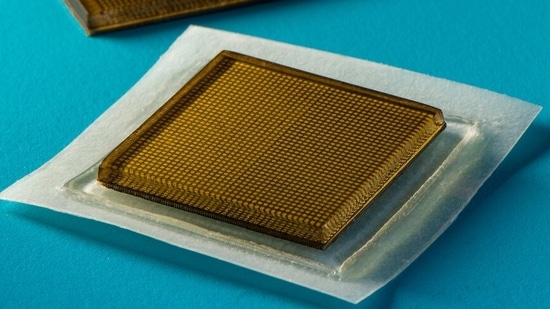Stamp-sized ultrasound stickers for high resolution images of organs: Report
Ultrasound technique is a widely used technique in healthcare to monitor our internal organs. Unlike X-Ray photography or CT scan, this non-invasive procedure is not harmful.
A team of engineers from the Massachusetts Institute of Technology (MIT) has developed a stamp-sized ultrasound imaging device, a potential replacement of heavy and specialized ultrasound machinery. Research reported by MIT news asserts that this ‘Ultrasound sticker’ sticks to the body part and provides uninterrupted high-resolution ultrasound imaging for up to 48 hours. They further aim to develop the device to operate remotely so it becomes as accessible as ‘buying Band-Aids at the pharmacy’.

The Ultrasound imaging method
The Ultrasound technique is a widely used technique in healthcare to monitor our internal organs. Unlike X-Ray photography and CT scan, this noninvasive procedure is not harmful. The current ultrasound method requires specialist person handling bulky and complex equipments that too are only available in hospitals. They attach the ultrasound probe to body part, which emits sound waves in the body. The reflection of sound waves creates high resolution imagery of internal organs which is then examined by doctor to understand the ailment. The research claims to ease out this process with the help of their wearable and later portable ultrasound device.
The researchers who have got their work published in Science, tested the device on volunteers. The device showed high-resolution imagery even though the test subjects were standing, sitting, or were doing various other activities.
ALSO READ: MIT issues blockchain-powered degree certificates to 2,212 students
The future Goal
The researchers are striving to make the device work wireless as the present design calls for connecting the stickers to instruments that decipher the reflected sound waves into images, analogous to heart-monitoring EKG stickers. The study’s senior author, Xuanhe Zhao told MIT news, “We envision a few patches adhered to different locations on the body, and the patches would communicate with your cellphone, where AI algorithms would analyse the images on demand.” Zhao, who is also a professor at MIT, added, “We believe we’ve opened a new era of wearable imaging: With a few patches on your body, you could see your internal organs.”
The other existing models
The conventional ultrasound testing requires a person to hold the probe attached to the patient’s body. So, it turns cumbersome in situations where monitoring is required for several hours. Even if some type of automation is provided by employing robotic hand, the slippery liquid between the probe and the body part squeezes out. This ultrasound gel is necessary to transmit the waves from probe to body, enabling imaging. These constraints limit long-duration monitoring.
Underlining the great prospective of a wearable ultrasound imaging tool, Chonghe Wang, an MIT graduate student, told MIT news that it would have great potential in the future of clinical diagnosis. But exposing the existing impediment in other designs, he added, “the resolution and imaging duration of existing ultrasound patches is comparatively low, and they cannot image deep organs”.
Researchers have tried their hand at other portable designs but they are incapable of giving good resolution imaging. The transducers are not fixed at their position when the device stretches along with body movement. The relative movement between the transducers creates distorted imagery, says the report.
These problems will possibly be eliminated by MIT team’s new design. The sticker made up of stretchy adhesive layers conforms to the skin and hinders the relative movement of the transducers, generating high-resolution images.






